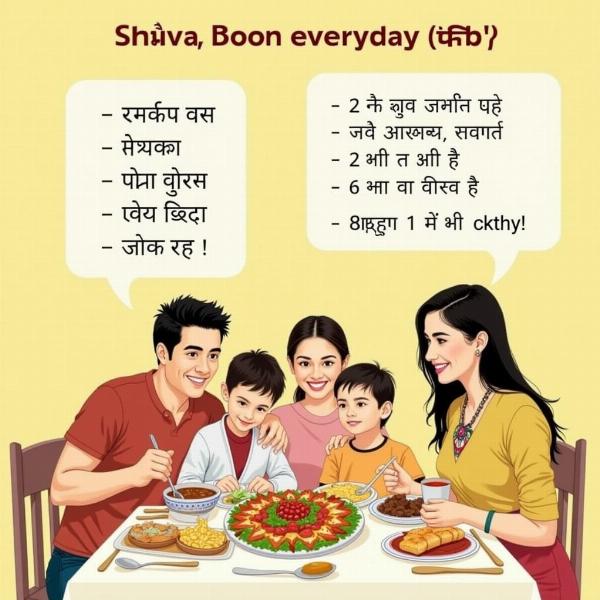Khaya, a word often encountered in various contexts, holds significant meaning in Hindi. This article will delve deep into the various interpretations of “khaya meaning in hindi,” exploring its nuances and usage across different situations. We’ll also examine its cultural significance and provide practical examples to help you grasp its essence fully.
Understanding the Core Meaning of Khaya
“Khaya” (खाया) is the past participle form of the verb “khana” (खाना), which primarily means “to eat” or “to consume” in Hindi. Therefore, the most common and literal meaning of “khaya” is “eaten” or “consumed.” It describes the act of having ingested something, be it food, drink, or even abstract concepts like information or experiences.
Beyond the Plate: Figurative Uses of Khaya
While “khaya” most often refers to the physical act of eating, it can also carry figurative meanings, adding depth and richness to the Hindi language.
Khaya as Experienced or Endured
In certain contexts, “khaya” can imply having gone through a difficult or challenging experience. It suggests having “consumed” or “absorbed” the impact of a situation, often negative. For example, “Dukh khaya” (दुःख खाया) translates to “endured suffering” or “experienced hardship.”
Khaya and Corruption
“Khaya” can also allude to corruption, particularly the embezzlement of funds. In this context, it implies having “consumed” or “devoured” money illicitly. This figurative usage highlights the destructive nature of corruption.
Khaya in Everyday Conversations
The word “khaya” seamlessly integrates into everyday Hindi conversations, often appearing in common phrases and expressions.
- “Kya khaya?” (क्या खाया?): This translates to “What did you eat?” and is a common greeting or a way to express care and concern.
- “Kuch nahi khaya” (कुछ नहीं खाया): This means “I haven’t eaten anything,” often used in response to the previous question.
- “Bahut khaya” (बहुत खाया): Meaning “ate a lot,” this phrase expresses satisfaction after a hearty meal.
 Family enjoying a meal together
Family enjoying a meal together
Conclusion: A Word with Multiple Flavors
“Khaya meaning in hindi” encompasses a range of interpretations, from the literal act of eating to figurative expressions of experience and corruption. Understanding these nuances enriches your comprehension of the Hindi language and allows you to appreciate its depth and versatility. By exploring its various uses, we can see how a seemingly simple word like “khaya” adds flavor and complexity to communication.
FAQ
- What is the root verb of “khaya”?
- The root verb of “khaya” is “khana.”
- Can “khaya” be used to describe emotional experiences?
- Yes, “khaya” can be used figuratively to describe enduring difficult emotional experiences.
- What does “khaya piya” mean?
- “Khaya piya” refers to food and drink, literally “eaten and drunk.”
- How do you ask someone what they ate in Hindi?
- You can ask “Kya khaya?” (क्या खाया?)
- Is “khaya” always used in the past tense?
- Yes, “khaya” is the past participle form of “khana” and is always used in the past tense.
- What is a common example of “khaya” used in a figurative sense?
- “Dukh khaya” (दुःख खाया) meaning “endured suffering” is a common example.
- Can “khaya” have negative connotations?
- Yes, when referring to corruption, “khaya” can have negative connotations.
Meaning-Hindi.in is your trusted partner for professional Hindi translation services. We offer a comprehensive suite of solutions, including business and commercial document translation, certified and legal document translation, technical and user manual translation, website and localization services, educational and academic document translation, express translation, and specialized industry translations. Contact us today to discuss your translation needs. Email: [email protected], Phone: +91 11-4502-7584. Meaning-Hindi.in is dedicated to providing accurate, culturally sensitive, and high-quality translations that bridge language barriers and facilitate effective communication.